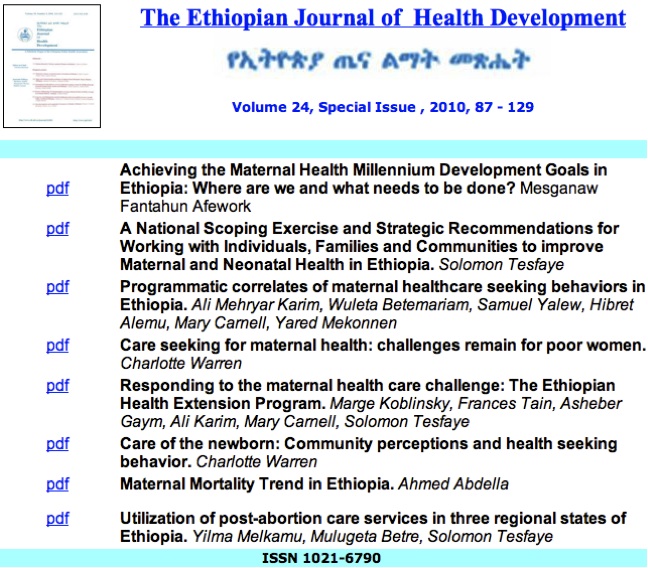 BBC World Service citing the Global Fund (Early Evidence of Sustainable Impact on Malaria) reported yesterday that malaria mortality declined by almost 50% in Ethiopia. The Global fund report states a 54% decline in malaria cases and 48% decline in malaria deaths.
BBC World Service citing the Global Fund (Early Evidence of Sustainable Impact on Malaria) reported yesterday that malaria mortality declined by almost 50% in Ethiopia. The Global fund report states a 54% decline in malaria cases and 48% decline in malaria deaths.
Are such figures true? Working on malaria research projects in south Ethiopia I can confirm that fewer malaria patients are admitted to health centres and hospitals. Our preliminary data show that people use bed nets, community health workers diagnose and treat malaria cases, and malaria deaths do not occur as often as previously.
But, we have learned that malaria is a focal disease. In our research on malaria and climate we observe the last years have been dry in large parts of south Ethiopia. After the rains we first see increases in the mosquito densities followed by increases in malaria cases. There are more mosquitoes and cases after the heavy rains in early 2010, compared with 2009. Although we believe that malaria control efforts are effective, we need more time to get a full picture on the links between interventions, malaria sickness and death and naturally occurring variations.
Recent demographic data show decline in under-five mortality rates in Ethiopia from 204 to 123 per 1000 live births between 1990 and 2005. Ethiopia shows good progress was observed in controlling HIV/AIDS and malaria, but not for tuberculosis (Otten M et al, 2009; Accorsi S et al, 2009). Although a downward trend was observed in the maternal mortality ratio, it is too early to reach any firm conclusion about the possibility of achieving MDG5 because of sampling variability (Hogan M et al, 2010).
The good achievements in controlling malaria and increasing immunisation coverage show that scheduled routine interventions is well handled by the current health care system. However, interventions that rely on clinical services near to households with 24h availability, such as skilled care at birth, are weak. With the good achievements on malaria and immunization coverage, Ethiopia now needs to strengthen health institutions such as hospitals and health centres.
Otten, M., Aregawi, M., Were, W., Karema, C., Medin, A., Jima, D., Kebede, W., Gausi, K., Komatsu, R., Korenromp, E., Low-Beer, D., & Grabowsky, M. (2009). Initial evidence of reduction of malaria cases and deaths in Rwanda and Ethiopia due to rapid scale-up of malaria prevention and treatment Malaria Journal, 8 (1) DOI: 10.1186/1475-2875-8-14
Accorsi, S., Bilal, N., Farese, P., & Racalbuto, V. (2010). Countdown to 2015: comparing progress towards the achievement of the health Millennium Development Goals in Ethiopia and other sub-Saharan African countries Transactions of the Royal Society of Tropical Medicine and Hygiene, 104 (5), 336-342 DOI: 10.1016/j.trstmh.2009.12.009
Hogan, M., Foreman, K., Naghavi, M., Ahn, S., Wang, M., Makela, S., Lopez, A., Lozano, R., & Murray, C. (2010). Maternal mortality for 181 countries, 1980–2008: a systematic analysis of progress towards Millennium Development Goal 5 The Lancet DOI: 10.1016/S0140-6736(10)60518-1

